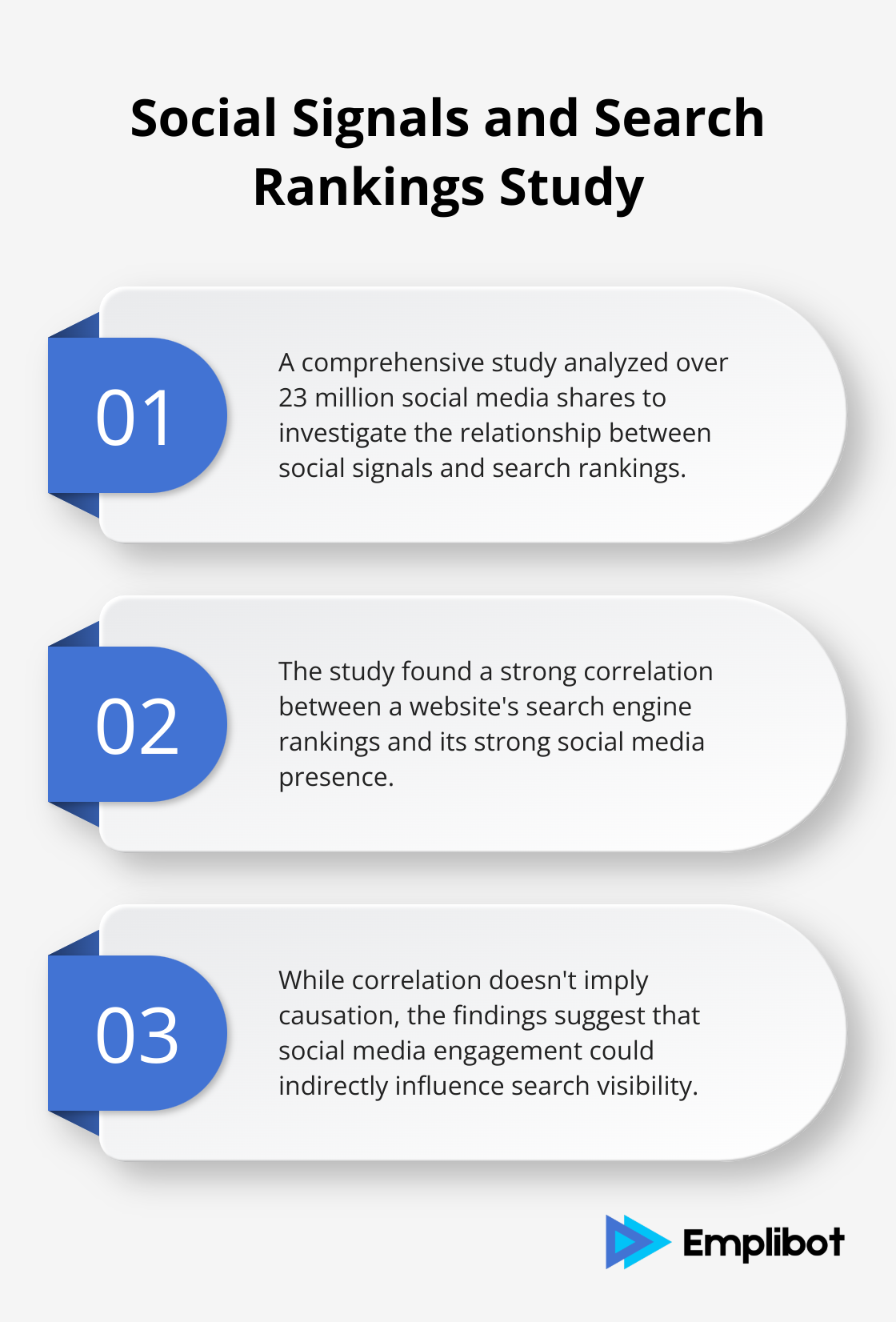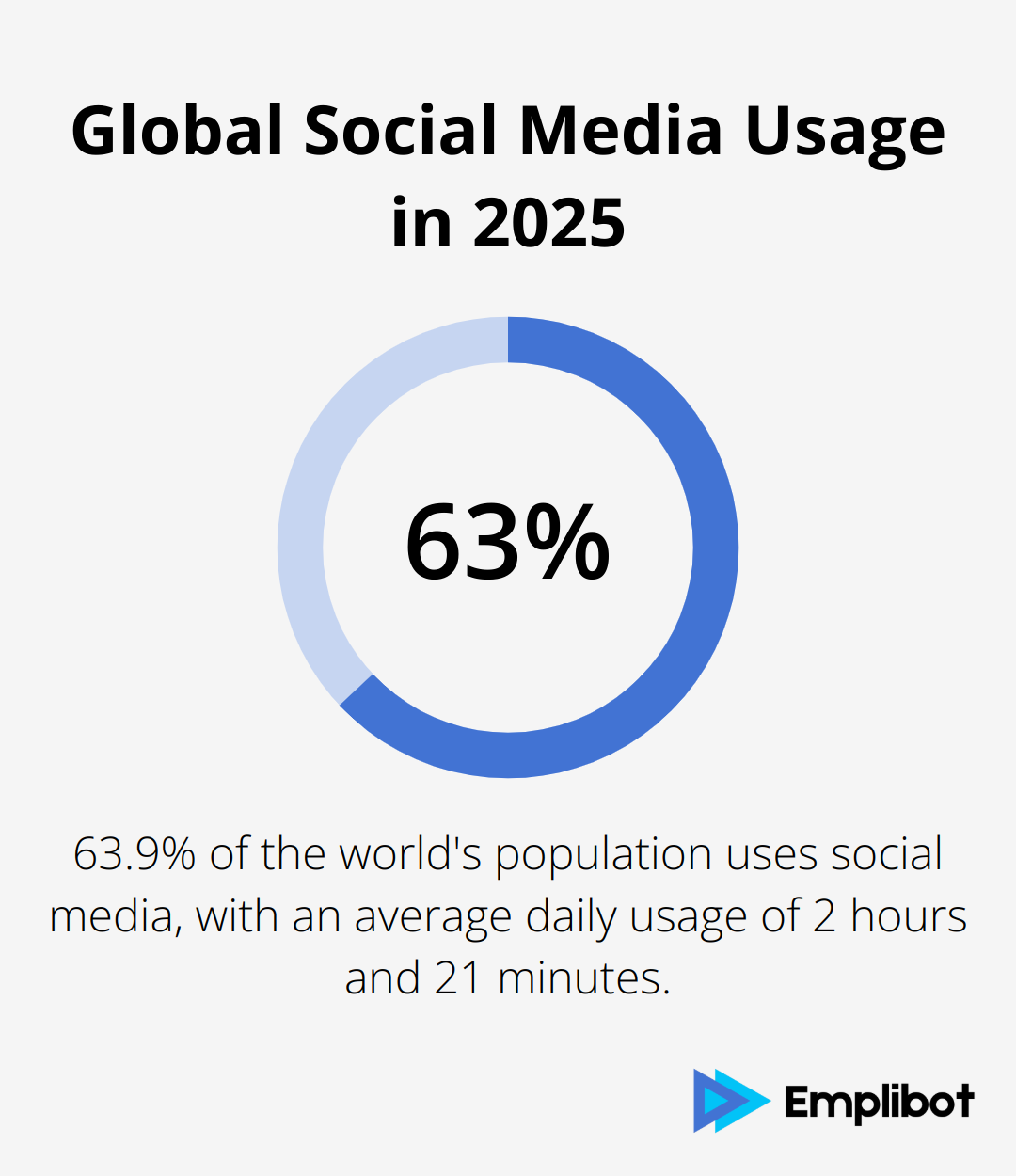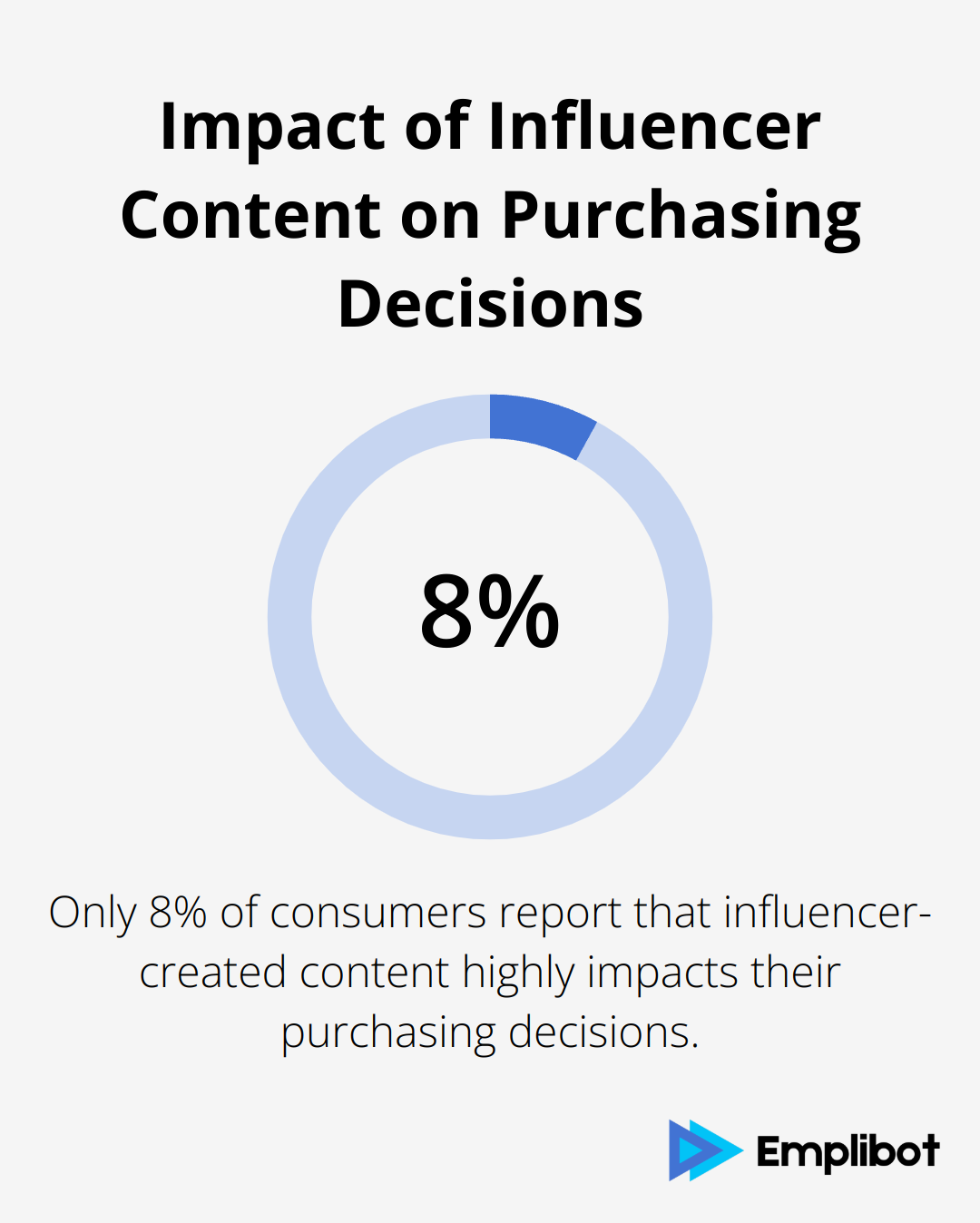At Emplibot, we’ve seen firsthand how sharing your blog on social media can transform your online presence. It’s not just about getting more eyes on your content; it’s a strategic move that can boost your search rankings, drive traffic, and establish your brand authority.
In this post, we’ll explore why social media sharing is a game-changer for your blog and how it can amplify your digital marketing efforts.
Do Social Signals Boost Search Rankings?
The Correlation Between Social Signals and Rankings
Social signals have become a hot topic in the world of search engine optimization (SEO). These signals (likes, shares, and comments on social media platforms) potentially influence how search engines rank web pages. A study that analysed over 23 million social media shares found a strong correlation between rankings and a strong social media presence. However, this correlation doesn’t necessarily imply causation.
Google’s Stance on Social Signals
Google maintains an ambiguous position on the role of social signals in its ranking algorithm. While they don’t consider social signals as a direct ranking factor, they acknowledge their indirect influence on rankings. Matt Cutts (former head of Google’s webspam team) explained that Google treats social media pages like any other pages in their index.
Bing’s Approach to Social Signals
Bing takes a more open stance on incorporating social signals into their ranking algorithm. They state that social influence can serve as a helpful signal in determining the authority of a page or domain. This approach suggests that content with more social engagement might have a better chance of ranking well on Bing.
The Indirect Benefits of Social Signals
Even if social signals don’t directly impact rankings, they can lead to other factors that do. Increased social media visibility often results in more backlinks (a crucial ranking factor). Additionally, social media can drive more traffic to your site, potentially increasing dwell time and reducing bounce rates – both positive signals for search engines.
Hootsuite’s Social Media Experiment
Hootsuite conducted an experiment to test the impact of social signals on search rankings. They created two identical websites with similar content but promoted one heavily on social media. The result? The socially promoted site consistently outranked its counterpart in search results, suggesting a strong link between social engagement and search visibility.

While the exact impact of social signals on search rankings remains somewhat unclear, their potential benefits are significant. Social signals are crucial for SEO, significantly influencing website rankings on search engine results pages. Sharing your blog content on social media not only increases your visibility but also potentially boosts your search engine rankings. This strategy sets the stage for our next topic: how social media sharing drives direct traffic to your website.
How Social Media Drives Direct Traffic
The Power of Social Platforms
Social media platforms have become powerful engines for driving direct traffic to websites. 63.9% of the world’s population uses social media, with an average daily usage of 2 hours and 21 minutes (February 2025). This significant percentage underscores the importance of leveraging social platforms to boost your blog’s visibility and readership.

Platform-Specific Strategies
Different social media platforms offer unique opportunities for driving traffic. Pinterest saw a 23.2% year-over-year audience growth rate as of January 2024, making it the second-fastest growing platform. This statistic highlights the importance of tailoring your sharing strategy to each platform’s strengths.
Crafting Compelling Content
To maximize click-throughs from social posts, you must craft compelling content that resonates with your audience. Posts with images receive 2.3 times more engagement than those without. Additionally, posts that ask questions generate 100% more comments than standard text-based posts.
The Importance of Timing
The timing of your social media posts can significantly impact their performance. An analysis of 30 studies revealed that the best times to post vary by platform:
- Facebook: Wednesday at 11 am and 1 pm
- Twitter: Wednesday at 9 am and Friday at 9 am
- LinkedIn: Wednesday from 8 am to 10 am and noon
- Instagram: Wednesday at 11 am and Friday at 10-11 am
Tracking and Analysis
To optimize your social media strategy, you must track and analyze your traffic. Google Analytics allows you to see which social platforms drive the most traffic to your site. (63% of marketers use social media data to understand their audience better.)
UTM parameters (tags added to your URLs) help you track the performance of specific campaigns or posts. These parameters can increase your tracking accuracy by up to 97%.
The strategies outlined above will help you harness the power of social media to drive direct traffic to your blog. However, traffic is just one piece of the puzzle. In the next section, we’ll explore how consistent social sharing builds your brand and establishes you as a thought leader in your industry.
How to Build Your Brand Through Social Media
Consistency Builds Recognition
Social media platforms offer powerful tools for brand building and thought leadership establishment. Brands benefit from offering a variety of content to support the full customer journey, with 53% of consumers reporting higher social media usage recently. This statistic highlights the importance of an active social media presence.
To maximize your impact, try to maintain a regular posting schedule. Buffer suggests posting 3-4 times per week on Facebook, 1-2 times per day on Twitter, and 1-2 times per week on LinkedIn. (These frequencies may vary based on your industry and audience, so test and adjust your strategy as needed.)
Showcase Your Expertise
Positioning yourself as an industry expert requires more than sharing your blog posts. Provide value beyond your own content. Share industry news, offer insights on trending topics, and engage in relevant conversations.
Create and share infographics to effectively demonstrate your expertise. HubSpot reports that users like and share infographics on social media 3x more than any other content type. This format allows you to present complex information in an easily digestible manner, showcasing your knowledge while providing value to your audience.
Engage Your Audience
Engagement works both ways. Respond to comments, ask questions, and participate in industry-related discussions. Sprout Social found that 40% of consumers expect brands to respond within the first hour of reaching out on social media, while 79% expect a response in the first 24 hours.
Host live Q&A sessions or webinars on platforms like LinkedIn or Facebook. These interactive formats allow you to demonstrate your expertise in real-time while fostering a sense of community among your followers.
Leverage User-Generated Content
Encourage and share user-generated content (UGC) to boost your brand’s credibility. Only 8% of consumers say influencer-created content highly impacts their purchasing decisions – down 23% from 2017. Feature content created by your audience to provide social proof and foster a stronger connection with your community.

For example, if you run a fitness blog, encourage followers to share their workout progress using a branded hashtag. Regularly feature these posts on your profile to inspire others and showcase the real-world impact of your content.
Adapt and Evolve
Building your brand and establishing thought leadership through social media requires ongoing effort. Monitor your industry’s trends and adjust your strategy based on your audience’s response. (This approach will help you amplify your blog’s impact and solidify your position as a trusted authority in your field.)
Final Thoughts
Sharing your blog on social media is essential in today’s digital landscape. It improves search visibility, increases direct traffic, and strengthens brand recognition. A well-executed social media strategy amplifies your blog’s impact, creating a growth cycle where increased engagement leads to better search rankings and more site traffic.
Managing a consistent sharing strategy across multiple platforms can be complex and time-consuming. Emplibot automates this process, handling content planning, creation, and distribution across social media platforms. It produces high-quality content tailored to your business and ensures your blog posts reach your audience on various platforms.
Emplibot increases your traffic, leads, and sales while saving time and resources. It’s a complete content marketing solution that runs on autopilot (allowing you to focus on other aspects of your business). To learn more about how you can streamline your content creation and social media sharing process, check out our blog to social feature at Emplibot.

